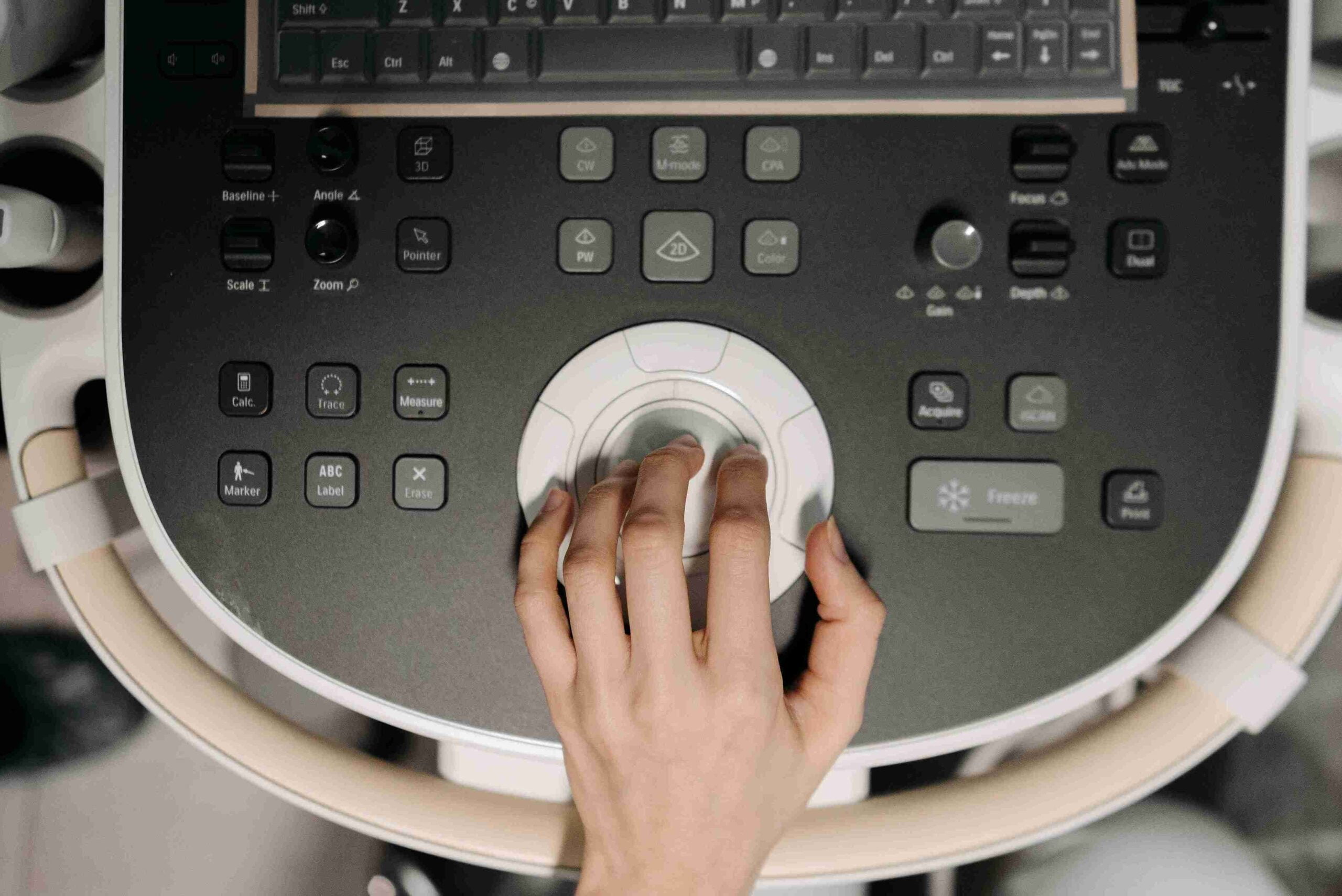Ultrasound machines are vital tools in modern medical diagnostics, widely used in hospitals, clinics, and healthcare facilities across Pakistan. Understanding the key parts of an ultrasound machine is essential for healthcare professionals to ensure optimal operation, accurate diagnostics, and efficient maintenance. This guide provides an in-depth look at the main components of an ultrasound machine, helping medical practitioners in Pakistan make the most of this critical technology.
Introduction to Ultrasound Machines
What is an Ultrasound Machine?
An ultrasound machine uses high-frequency sound waves to produce images of the internal structures of the body. These images are essential for diagnosing a variety of medical conditions, guiding procedures, and monitoring patient health.
Importance of Understanding Ultrasound Machine Parts
Knowing the key parts of an ultrasound machine allows healthcare professionals to operate the equipment effectively, troubleshoot issues, and ensure proper maintenance. This knowledge enhances diagnostic accuracy and improves patient care.
Key Parts of an Ultrasound Machine
Transducer/Probe
Function
The transducer, also known as the probe, is the primary component that emits sound waves and receives the echoes that form the ultrasound image. Different types of transducers are used for various medical applications, including linear, convex, and phased array probes.
Types
- Linear Transducers: Used for vascular imaging and small parts like thyroid and breast.
- Convex Transducers: Ideal for abdominal and obstetric imaging.
- Phased Array Transducers: Used for cardiac imaging due to their ability to capture images between the ribs.
Central Processing Unit (CPU)
Function
The CPU is the brain of the ultrasound machine, responsible for processing the signals received from the transducer and converting them into images. It also controls the overall functioning of the machine, including user interface, settings, and data storage.
Control Panel
Function
The control panel allows the operator to adjust settings, select imaging modes, and input patient information. It typically includes buttons, knobs, and a keyboard for easy navigation and operation.
Display Monitor
Function
The display monitor shows the ultrasound images in real-time, allowing the operator to view and interpret the results. High-resolution monitors are essential for accurate diagnostics.
Ultrasound Gel
Function
Ultrasound gel is applied to the patient’s skin to ensure efficient transmission of sound waves from the transducer into the body. The gel eliminates air pockets that can interfere with sound wave transmission.
Printer and Storage Devices
Function
Printers and storage devices allow for the recording and archiving of ultrasound images. These images can be printed for physical records or stored digitally for future reference and analysis.
You Should Also Read This: The Ultimate Guide to Using a Power Legs Foot Massager for Maximum Relief
Advanced Features and Components
Doppler Imaging
Function
Doppler imaging measures and visualizes blood flow within the body. This feature is crucial for cardiovascular diagnostics and monitoring blood flow in organs.
3D/4D Imaging
Function
3D imaging provides three-dimensional views of organs and tissues, while 4D imaging adds the dimension of time, showing real-time movement. These features are especially useful in obstetrics and detailed anatomical studies.
Elastography
Function
Elastography assesses tissue stiffness, aiding in the diagnosis of conditions like liver fibrosis and tumors. It provides additional diagnostic information that complements traditional imaging.
Maintenance and Troubleshooting
Regular Maintenance
Importance
Regular maintenance is essential to ensure the longevity and optimal performance of ultrasound machines. This includes routine cleaning, calibration, and software updates.
Tips
- Cleaning: Regularly clean the transducer and other parts to prevent contamination.
- Calibration: Periodically calibrate the machine to maintain image accuracy.
- Software Updates: Install updates to keep the machine’s software current and efficient.
Common Issues and Solutions
Image Quality Problems
- Solution: Check the transducer for damage, ensure proper application of ultrasound gel, and adjust machine settings.
Software Glitches
- Solution: Restart the machine, check for software updates, and contact technical support if necessary.
Hardware Malfunctions
- Solution: Inspect the machine for visible damage, ensure all connections are secure, and schedule professional servicing if needed.
Conclusion
Understanding the key parts of an ultrasound machine is crucial for healthcare professionals in Pakistan to ensure efficient operation, accurate diagnostics, and proper maintenance. By familiarizing yourself with the components and their functions, you can enhance the performance and longevity of your ultrasound equipment, ultimately improving patient care and outcomes. Knowledge of ultrasound machine parts helps in troubleshooting issues and ensures the machine is used to its full potential, providing the best possible care for patients.
